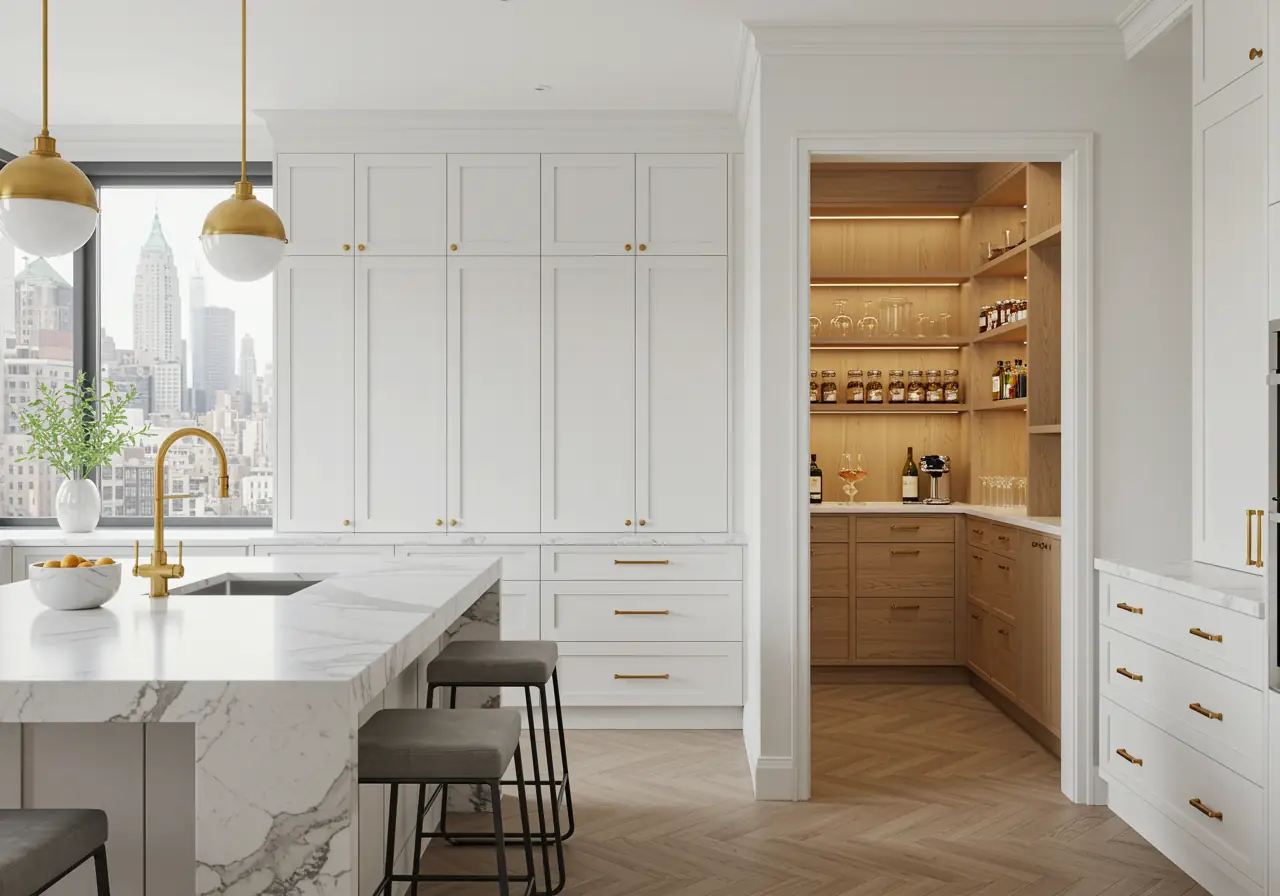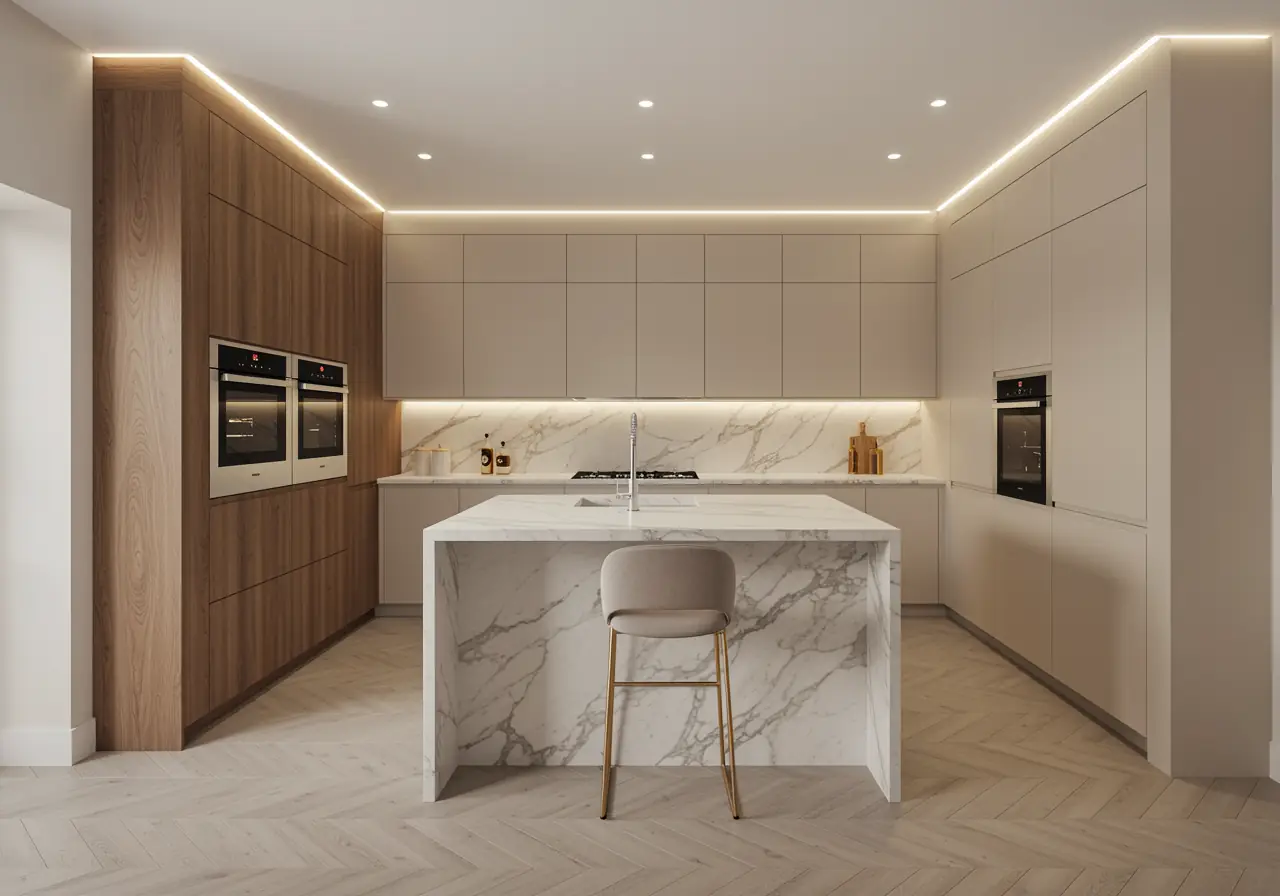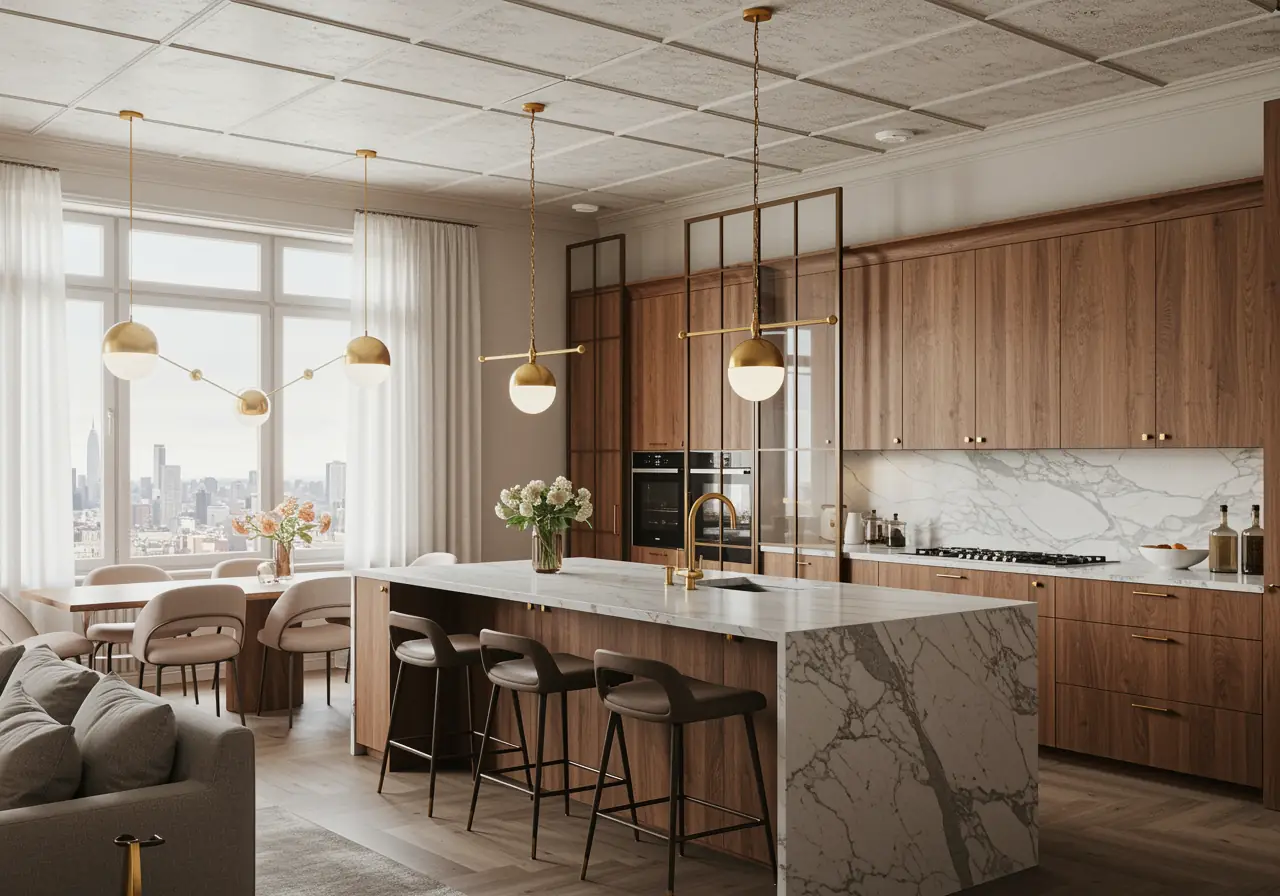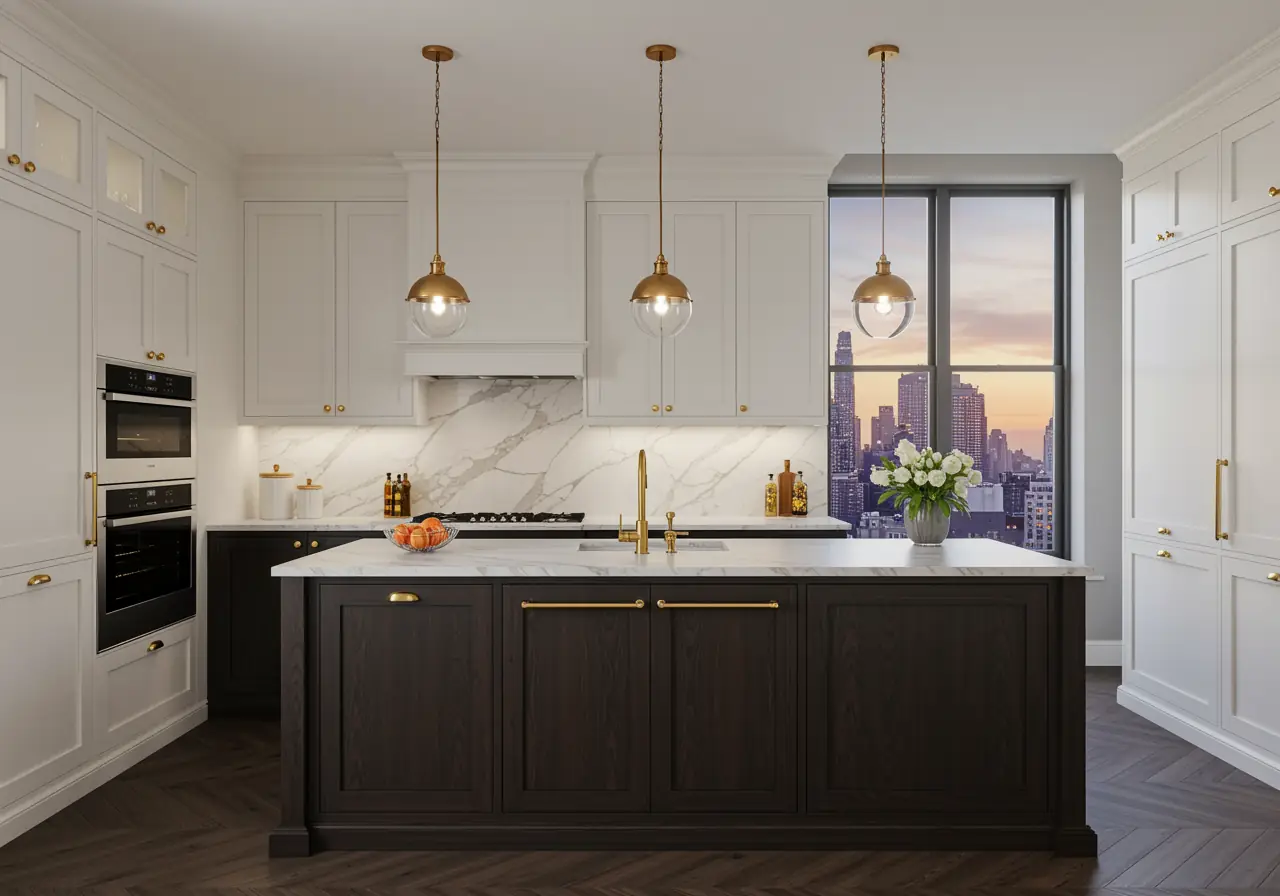Bathtub vs Walk-In Shower: Best Choice for NYC
Renovating a bathroom in New York City means making one of the most important design choices - bathtub vs walk-in shower NYC. This decision goes far beyond style preferences; it directly impacts how efficiently you use space, how much value you add to your property, and how comfortable your daily routine becomes. In Manhattan, where most apartments measure under 900 square feet, every inch matters.
Choosing between a sleek, frameless walk-in shower and a space-efficient bathtub can redefine both function and luxury in compact NYC bathrooms. Co-op and condo boards require strict waterproofing protocols, so understanding the structural and compliance aspects is crucial before starting your bathroom renovation.
With over 200 successful NYC bathroom remodels across Manhattan, Brooklyn, and Queens, our team at KS Renovation Group has seen how the right choice can elevate your home’s design, improve resale value, and deliver everyday comfort that lasts for decades.
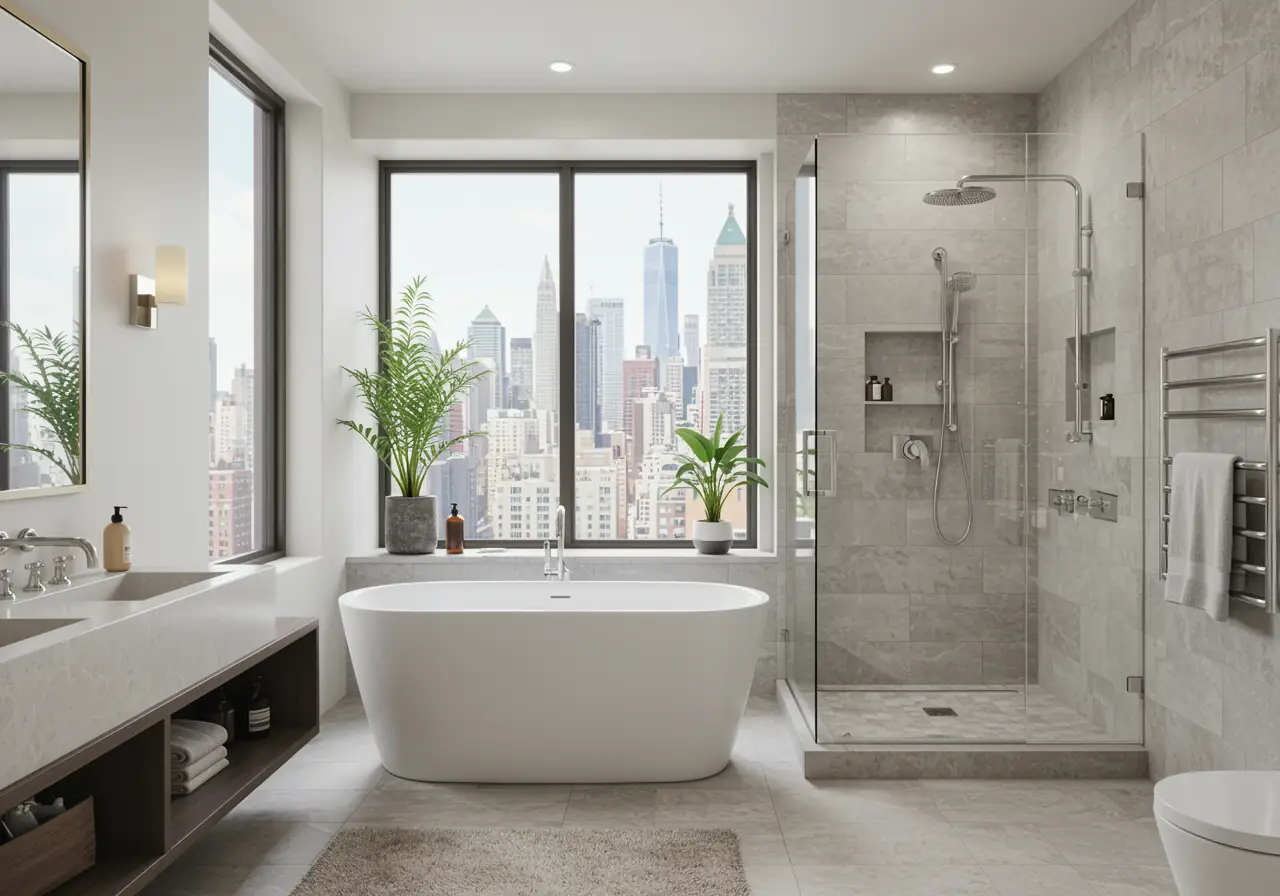
NYC Space Realities: Every Square Foot Counts
Space constraints define NYC bathroom renovations. Pre-war buildings often feature bathrooms as small as 35-40 square feet, while modern developments rarely exceed 60 square feet for secondary bathrooms.

The numbers tell the story: A standard bathtub consumes 13-15 square feet, while a walk-in shower functions beautifully in 9-12 square feet. In a cramped Upper East Side co-op, those extra feet translate to better traffic flow and desperately needed storage.
However, your building's bones matter tremendously. Ten-foot ceilings in older buildings create vertical opportunities that make tub-shower combinations feel less cramped. Conversely, modern 8-foot ceilings often benefit from the airy sensation frameless glass walk-in showers provide.
Co-op and condo boards add complexity. Walk-in showers require extensive waterproofing - full pan membrane systems extending 6-8 inches up walls - compared to contained tub installations. Your contractor must follow strict building protocols to avoid costly violations and protect units below.
Materials That Work in NYC's Tough Environment
Your material choices must withstand hard water, temperature swings, and intense daily use while delivering sophisticated urban aesthetics.
For walk-in showers: Large-format porcelain tiles (12x24-inch or larger) have become the gold standard. They minimize grout lines, reducing maintenance and preventing mildew issues common in humid bathrooms. We specify rectified porcelain with matte finishes - they hide water spots and provide critical slip resistance.
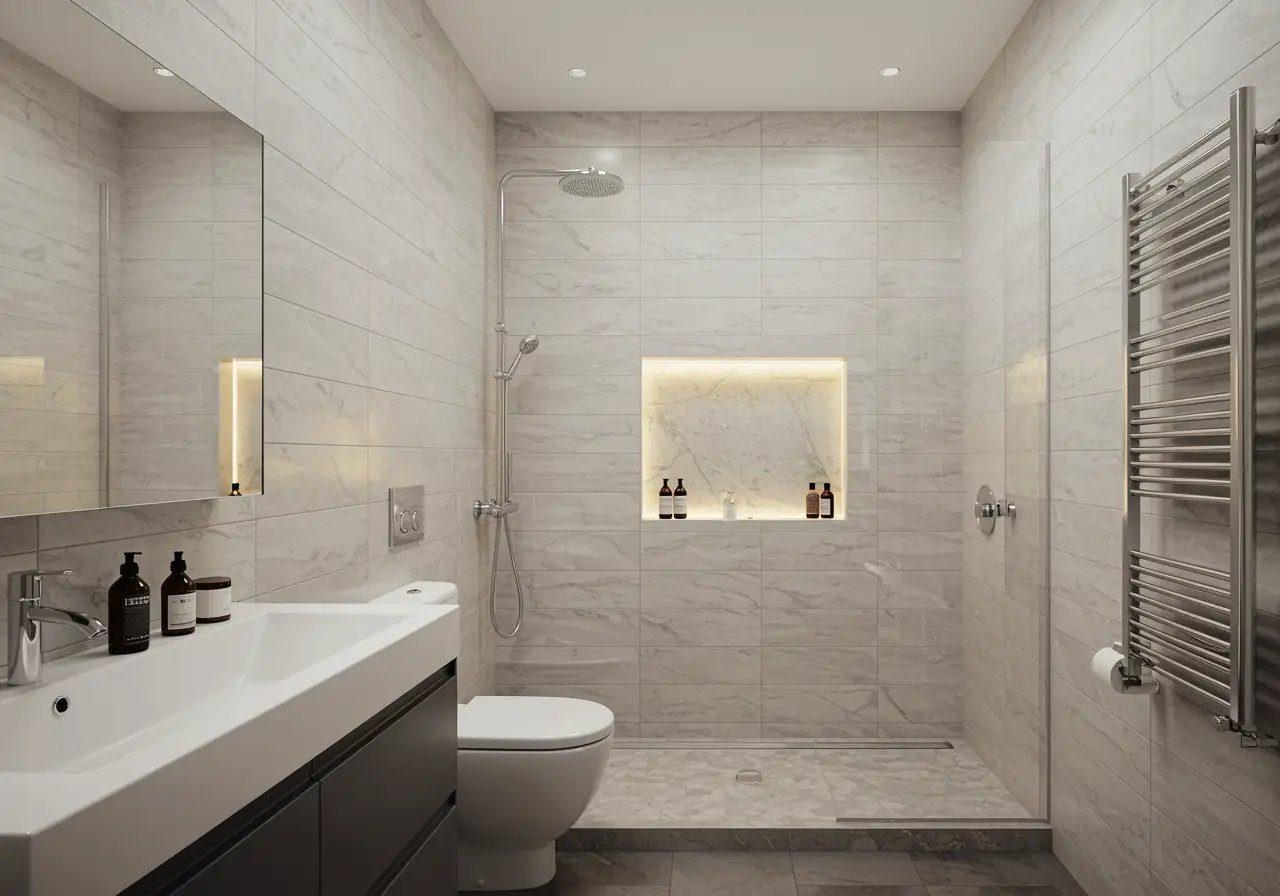
Natural stone like marble requires honest consideration. These materials need sealing twice yearly and they're vulnerable to etching from hard water. For clients wanting the stone look without maintenance headaches, modern porcelain that mimics Carrara marble delivers nearly identical aesthetics with superior durability.
Glass enclosures dramatically impact your space. Frameless ⅜-inch or ½-inch tempered glass creates spa-like openness and maximum visual flow. Semi-frameless options still deliver clean, modern looks at a more accessible price point. Always choose treated glass with protective coatings - they repel water and soap scum.
For bathtubs: High-grade acrylic resists chipping, retains heat, and comes in contemporary shapes that maximize limited square footage. Cast iron tubs with enamel coating remain premium choices for pre-war restorations - virtually indestructible and excellent heat retention, though their 300-400 pound weight requires structural verification.
Shower pans deserve attention. Custom tile pans create seamless luxury but demand expert installation. One waterproofing mistake means significant repair claims from downstairs neighbors. Prefabricated acrylic or composite bases offer foolproof waterproofing and practical cost-effectiveness for many NYC renovations.
Maximize every inch of your NYC bathroom with expert renovation by KS Renovation Group. From waterproofing to luxury finishes, we handle it all. Visit ksrenovationgroup.com to schedule your free consultation.
Walk-In Shower: Pros and Cons
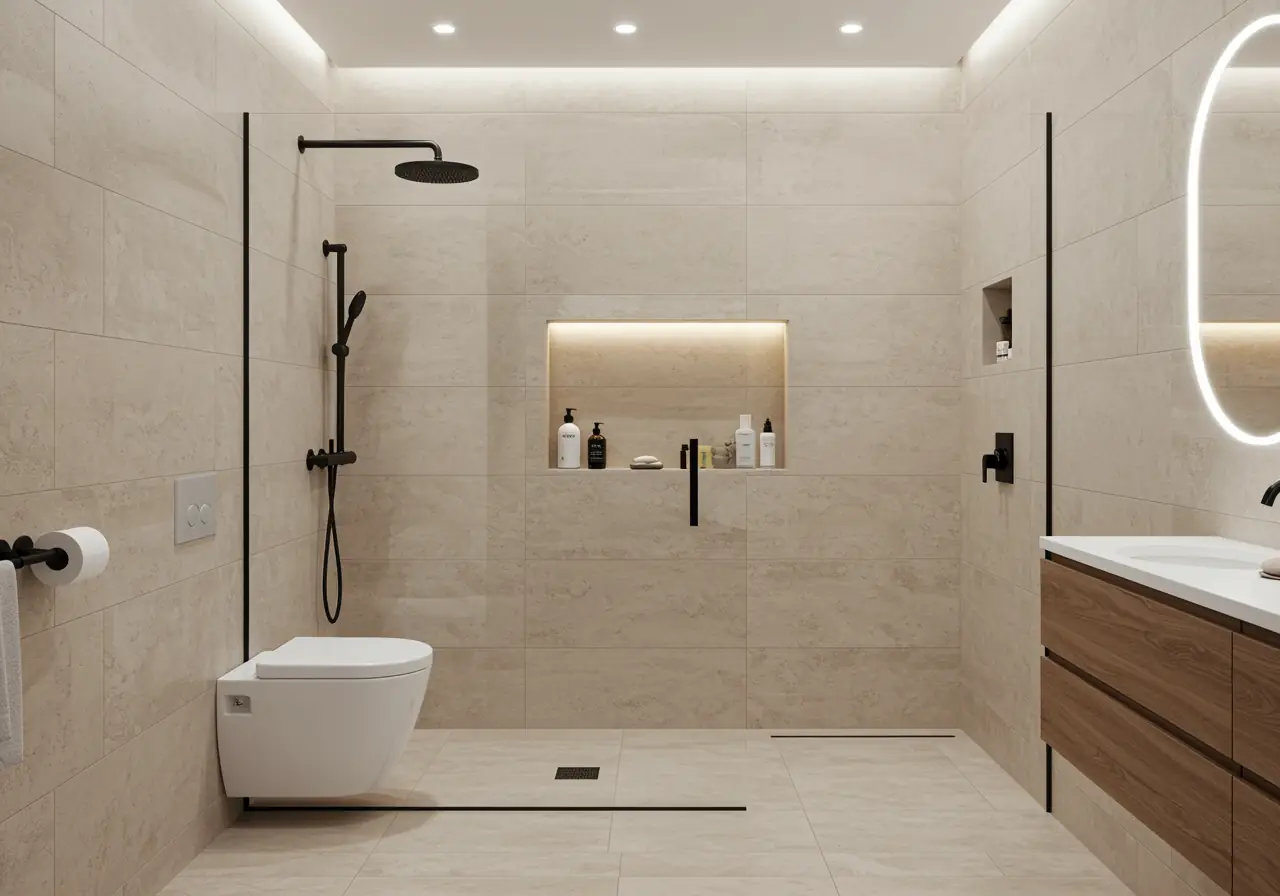
Advantages:
- Accessibility wins. Eliminates the 14-16 inch barrier, essential for aging-in-place or mobility challenges
- Easier maintenance. Spend 40% less time cleaning without tub surrounds and awkward spaces
- Luxury features. Accommodates multiple showerheads, rainfall fixtures, body sprays, and handheld options
- Visual expansion. Removes barriers, allowing natural light to flow and creating psychological spaciousness
- Modern aesthetics. Frameless glass and open designs deliver contemporary sophistication buyers seek
Disadvantages:
- Resale concerns. In family-oriented buildings, lacking a bathtub may narrow buyer pools or slightly impact valuation in some markets
- Higher installation requirements. More extensive waterproofing, custom tile work, and glass installation required compared to standard tubs
- Water containment challenges. Requires proper slope (¼ inch per foot), adequate threshold, and correctly sized glass to prevent floor flooding

Bathtub: Pros and Cons
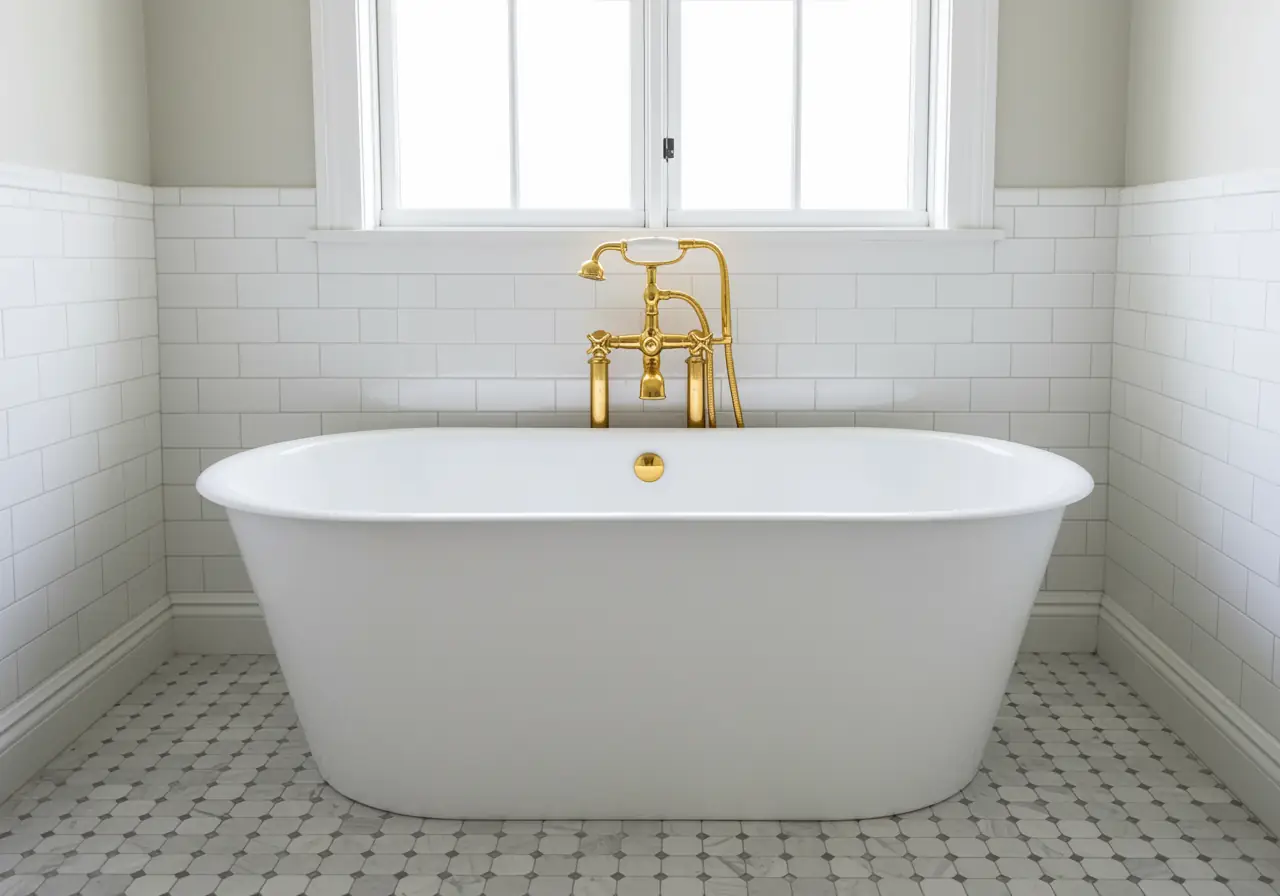
Advantages:
- Resale protection. Apartments with at least one tub sell faster in family neighborhoods like Park Slope, Tribeca, and Upper West Side
- Household flexibility. Serves young children, guests, hand-washing delicates, and pet bathing needs
- Soaking benefits. Quality soaking tubs provide genuine relaxation - mental health infrastructure for stressed New Yorkers
- Simpler installation. Standard installations proceed faster with minimal structural modification
Disadvantages:
- Accessibility barriers. High thresholds become increasingly difficult with mobility issues, injuries, or age
- More cleaning. Scrubbing tub surfaces, dealing with soap scum, reaching awkward corners demands more effort
- Visual weight. Tubs, surrounds, and curtains/doors fragment space, emphasizing compact dimensions
- Underutilization. Many New Yorkers rarely use tubs - dedicating 15 square feet to a feature used 5 days yearly wastes premium space
Accessibility and Future Planning
NYC's aging population increasingly prioritizes universal design. The bathtub vs walk-in shower debate directly impacts long-term independence.
Aging-in-place economics make sense. The average Manhattan apartment owner stays 12-15 years. Renovating for accessibility now prevents expensive future modifications or forced relocation when barriers become challenging.
Walk-in showers configured for accessibility include:
- Grab bars installed into reinforced walls
- Non-slip flooring throughout
- Handheld showerheads on sliding bars
- Built-in or fold-down seating
- Controls positioned 38-48 inches from floor
Curbless showers represent the gold standard - eliminating thresholds entirely while achieving sleek aesthetics that premium buyers actively seek. Proper execution requires floor pitch throughout the bathroom and careful drain placement.
For parents with young children, bathtubs remain useful for roughly 6-8 years. If your children are approaching this age, the utility justification for maintaining a tub diminishes significantly.
The Investment: Timeline and ROI
Timeline expectations: Complete bathroom renovations require 3-4 weeks for walk-in showers and 2-3 weeks for tub replacements. Co-op and condo board approval adds 2-6 weeks upfront. Plan accordingly to minimize disruption.
Return on investment varies by neighborhood. Quality bathroom upgrades in Manhattan and brownstone Brooklyn often show strong returns - significantly higher than national averages. The bathtub question specifically matters in family-oriented buildings where 2+ bedroom apartments without tubs may sell slower and potentially affect valuation.
Hidden factors frequently impact projects: building requirements for alteration agreements, temporary toilet facilities for single-bathroom apartments, asbestos or lead abatement in older buildings, electrical upgrades for new lighting or heated floors, and unexpected plumbing repairs revealed during demolition.
Plan your renovation with the future in mind. KS Renovation Group designs accessible, aging-in-place bathrooms that combine comfort, style, and long-term value. Schedule your free consultation today.
FAQ: Your Questions Answered
How much space do I need for a walk-in shower? Minimum functional size is 32x32 inches (9 square feet), though 36x36 to 36x48 inches creates more comfortable experiences. Many NYC bathrooms successfully accommodate these dimensions by eliminating bulky bathtubs.
Will removing my only bathtub hurt resale value? Impact depends on apartment size and neighborhood. For 2+ bedrooms in family areas, removing the sole tub may slightly narrow buyer pools. For studios and one-bedrooms, impact is typically minimal - buyers prioritize modern showers.
What's the best shower floor material for safety? Small-format mosaic tiles (2x2 inches or smaller) provide excellent slip resistance. Porcelain with matte or textured finishes and coefficient of friction ratings above 0.60 offers maximum safety with minimal maintenance.
Can I install a walk-in shower in a pre-war building? Absolutely. Pre-war buildings offer advantages - higher ceilings, solid construction, generous dimensions. Challenges include ensuring adequate floor support, working around cast iron plumbing, and meeting co-op waterproofing requirements.
What waterproofing is required for NYC walk-in showers? Most boards require full waterproof membrane systems (Schluter Kerdi or Wedi board) extending across shower floors and 6-8 inches up walls (often to ceiling height). These systems prevent catastrophic leaks and protect both your home and neighbors below.
Should I choose a tub or shower for aging in place? Walk-in showers dramatically outperform bathtubs for aging-in-place. Curbless designs with grab bars, handheld showerheads, seating, and non-slip floors support independence across life stages.
What's the cost difference between tub and shower in NYC? Walk-in showers typically require more investment than bathtubs, reflecting extensive waterproofing requirements, custom tile work, and glass enclosures. The exact difference varies based on material selections, fixture quality, and customization level. We provide detailed estimates during your consultation.
Do I need a permit for bathroom renovation in NYC? Yes. Most bathroom renovations require Department of Buildings permits, particularly when modifying plumbing, electrical, or structural elements. Working without permits risks fines and complications when selling.
Making Your Decision
Choose a walk-in shower when:
- You prioritize accessibility and aging-in-place
- You rarely use bathtubs for soaking
- Your household consists of adults without young children
- You're maximizing space in compact bathrooms
- You want contemporary aesthetics and easier maintenance
- Your building has another bathroom with a tub
Choose a bathtub when:
- You have young children or plan to start a family
- You regularly enjoy soaking
- You're concerned about resale value and this is your only bathroom
- You have adequate space without compromising functionality
- Your household benefits from bathing flexibility
Whatever you choose, invest in quality materials, proper waterproofing, and experienced contractors who understand NYC's unique challenges. Your bathroom renovation should deliver daily luxury while protecting your property investment.
Transform Your NYC Bathroom Today
Ready to create the perfect bathroom for your lifestyle? KS Renovation Group brings 15+ years of experience renovating hundreds of Manhattan, Brooklyn, and Queens bathrooms. We navigate co-op boards, building regulations, and compact spaces to deliver stunning results on time and on budget.
Schedule your free design consultation today. We'll evaluate your space, discuss your priorities, and create a customized plan that maximizes functionality while reflecting your style. Visit ksrenovationgroup.com or call us to start your bathroom transformation.
Let's build the bathroom you'll love for decades to come.

KS Renovation Blog
Get Inspired
Meaningful information about home remodeling for the true NYC homeowners.
OUr Clients Say
NYC kitchen remodeling Projects and more



